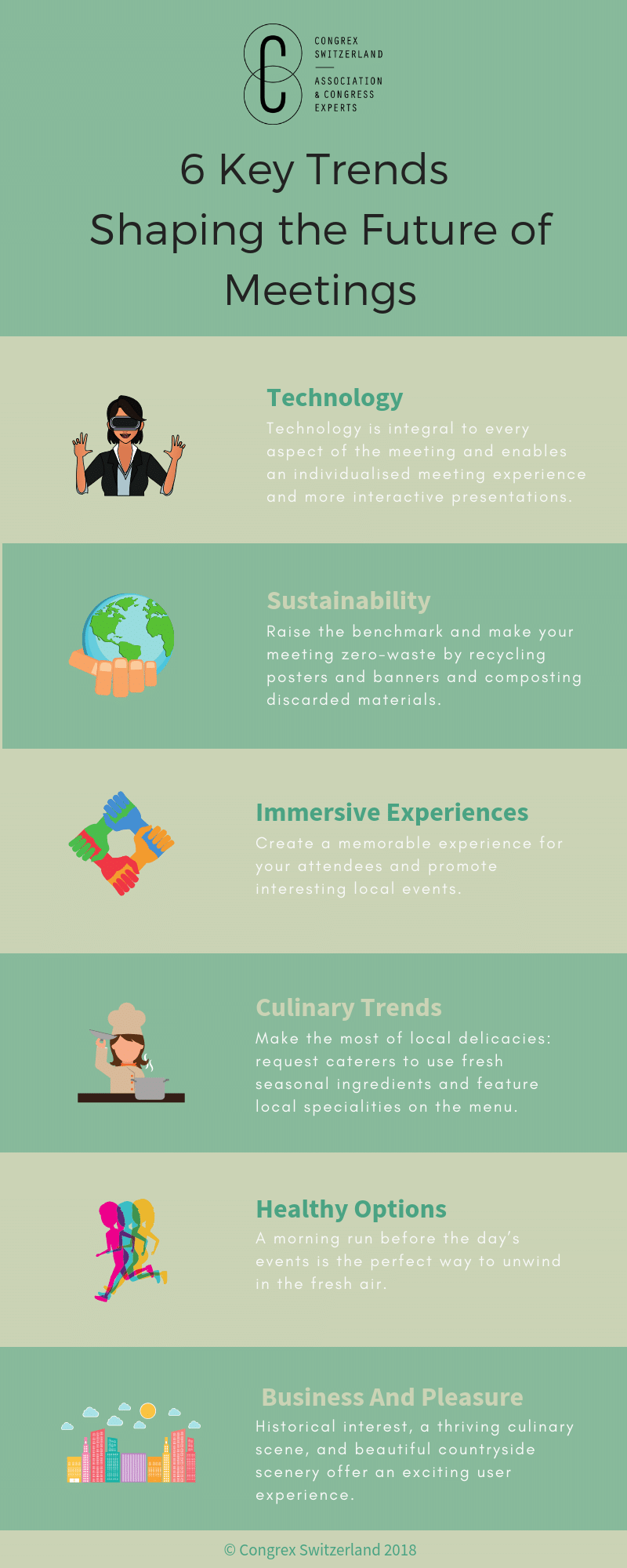Planning Sustainable Conferences: Six Eco-Friendly Practices for Organisers
Conferences and events are indispensable in the knowledge economy, facilitating innovation and professional growth. However, their environmental and social impact must be considered. This article explores six best practices for long-term sustainability in event planning based on our commitment to organising sustainable conferences and other environmentally friendly events.
Why Sustainability Matters in the Events Industry
The footprint of conferences can be substantial, especially during in-person events. Research shows that each attendee can generate CO2 values between 400 and 2,000 pounds. This is in addition to the carbon footprint of other event elements, like food, paper and plastic waste, or the venue’s energy consumption.
RELATED: How Associations Can Implement Innovation
Because of this, organisers have a crucial role in approaching events from a sustainability perspective. Developing and implementing green meeting practices for eco-friendly events is a vital aspect of our corporate social responsibility strategy and is aligned with our purpose and values, such as care and progress spirit. In recognition of our ongoing efforts and commitment to achieving zero emissions by 2028, we have been recently awarded the prestigious Sustainable Level 1 classification.
Next, we outline some critical factors in sustainable conference organisation based on our previous experience.
1. Conference Format
A recent study revealed that opting for a hybrid event format can reduce its environmental impact by two-thirds, whereas going entirely virtual raises that figure to 94%.
This was key to the success of the 2021 ESMINT Congress, a hybrid event organised by Congrex that achieved a significant carbon footprint reduction compared to in-person editions while remaining cost-effective. Here, you can read more about how we achieved eco-friendly goals and budget optimisation.
2. Sustainable Venue Selection
Some critical criteria we use to select sustainable event venues include:
- Location: prioritise venues accessible on foot or by public transport and those with a central location relative to other amenities that delegates may need to minimise additional travel. Venues with ample bicycle parking and electric vehicle charging stations are also good options.
- Green credentials or certifications: LEED and ISO 14001 attest to the venue’s energy efficiency across several dimensions, from waste management to water conservation, including using renewable energy sources and carbon-neutral materials or furnishings.
- Lighting: venues with good natural lighting reduce the burden on energy requirements.
- Green design features.
- Venues that offer carbon offsetting schemes.
3. Sustainable Catering

In scientific meetings, catering can account for up to 17% of the event’s total footprint. Some criteria for choosing sustainable food and beverage options include the following:
- Offering plant-based options.
- Pursuing green partnerships with contractors who provide organic catering or practice local sourcing.
- Reducing or removing single-use plastics
- Discussing water conservation options with the venue and catering company.Minimising waste or developing a plan to donate leftovers.
RELATED: 4 Tips To Avoid Food Waste At A Conference or Event
4. Digitalisation and Paperless Conferences
Environmentally conscious organisers are aware of the impact of paper use in meetings, both in terms of waste and the resources used in producing printed materials. At Congrex, we support using innovative technology to reduce paper consumption and embrace digitalisation.
Key actions in this respect include:
- Replacing printed programmes with digital ones or with an event app containing all the digital documentation delegates need.
- Using QR codes to replace printed brochures or product information.
- Issuing digital badges.
- Opting for recyclable materials where paper cannot be avoided.
RELATED: Rethinking The Mindset For Green Meetings
5. Supporting Local Communities

Conferences should have a broadly beneficial impact that includes the local communities in which they occur. Some strategies used with success to have a positive effect include:
- Partnering with local suppliers.
- Arranging guided local tours as part of pre- or post-programme activities.
- Donating to local charities and inviting attendees to get involved.
6. Measuring and Reporting sustainability
It is critical to have systems to measure, track, and report on sustainability efforts. This includes setting relevant metrics, choosing tech tools that collect and analyse performance data, getting feedback from delegates, and scheduling meetings with key stakeholders to report findings and agree on the next steps for future events.
RELATED: Six Ways To Make Your Conference More Sustainable
Conclusion

Sustainability is paramount in the events industry of the 21st century. In this article, we looked at six strategies we have used to successfully boost the sustainability ratings of conferences and deliver value to our clients and all stakeholders. Contact our team to learn more about how our services are related to sustainability or for assistance planning a sustainable conference.








